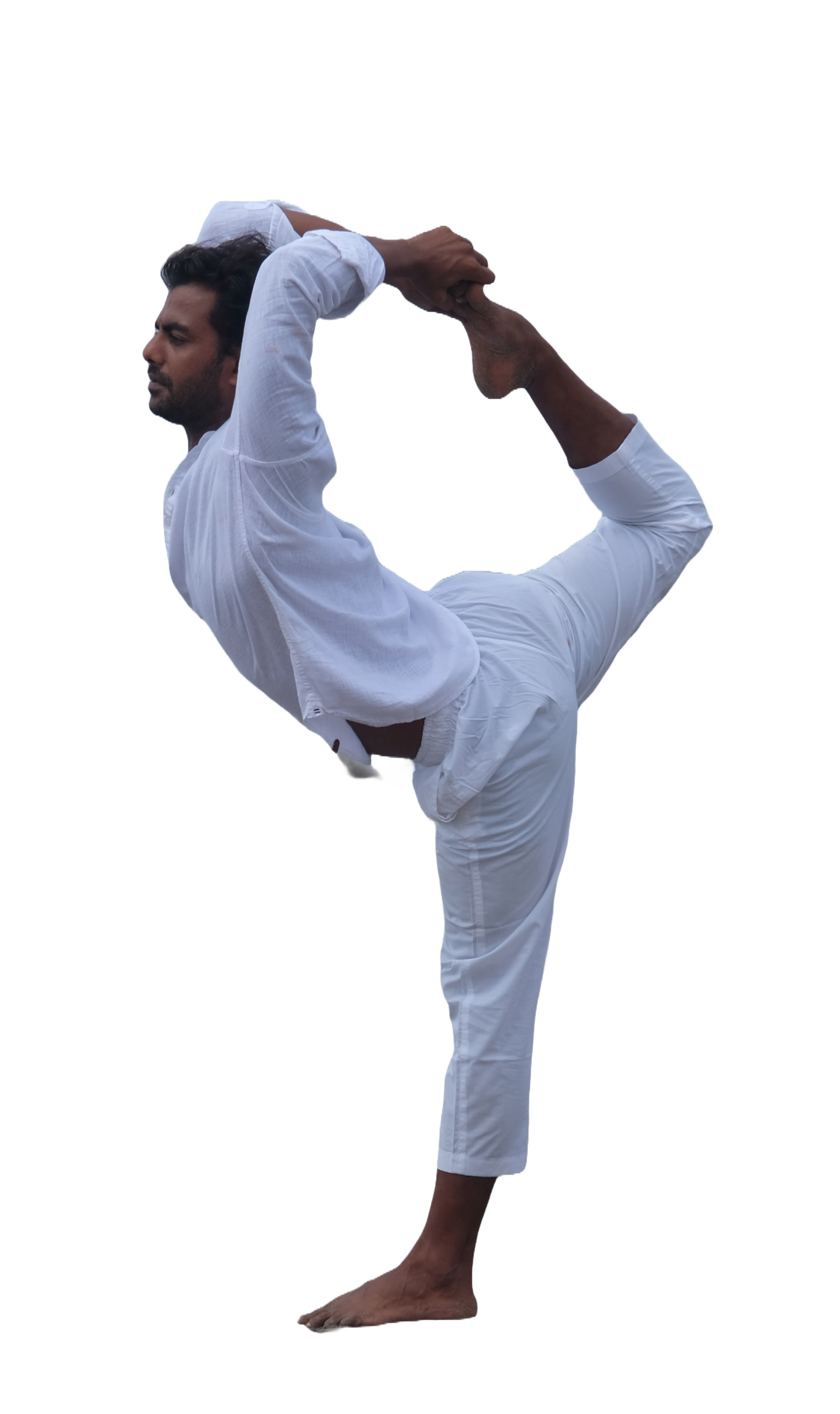-
-
Yoga Courses
Yoga Teacher Training India
Yoga Teacher Training Canada
Yoga Teacher Training Germany
Yoga Teacher Training Greece
Yoga Teacher Training Portugal
-
Yoga Retreats
-
YTTC Guide
This immersive 300 h Yoga teacher training program in Bali is crafted for dedicated practitioners and teachers seeking to deepen their expertise and improve their practice. This 300 hour yoga ttc in Bali offers a rich and varied curriculum to inspire and challenge you on every level.
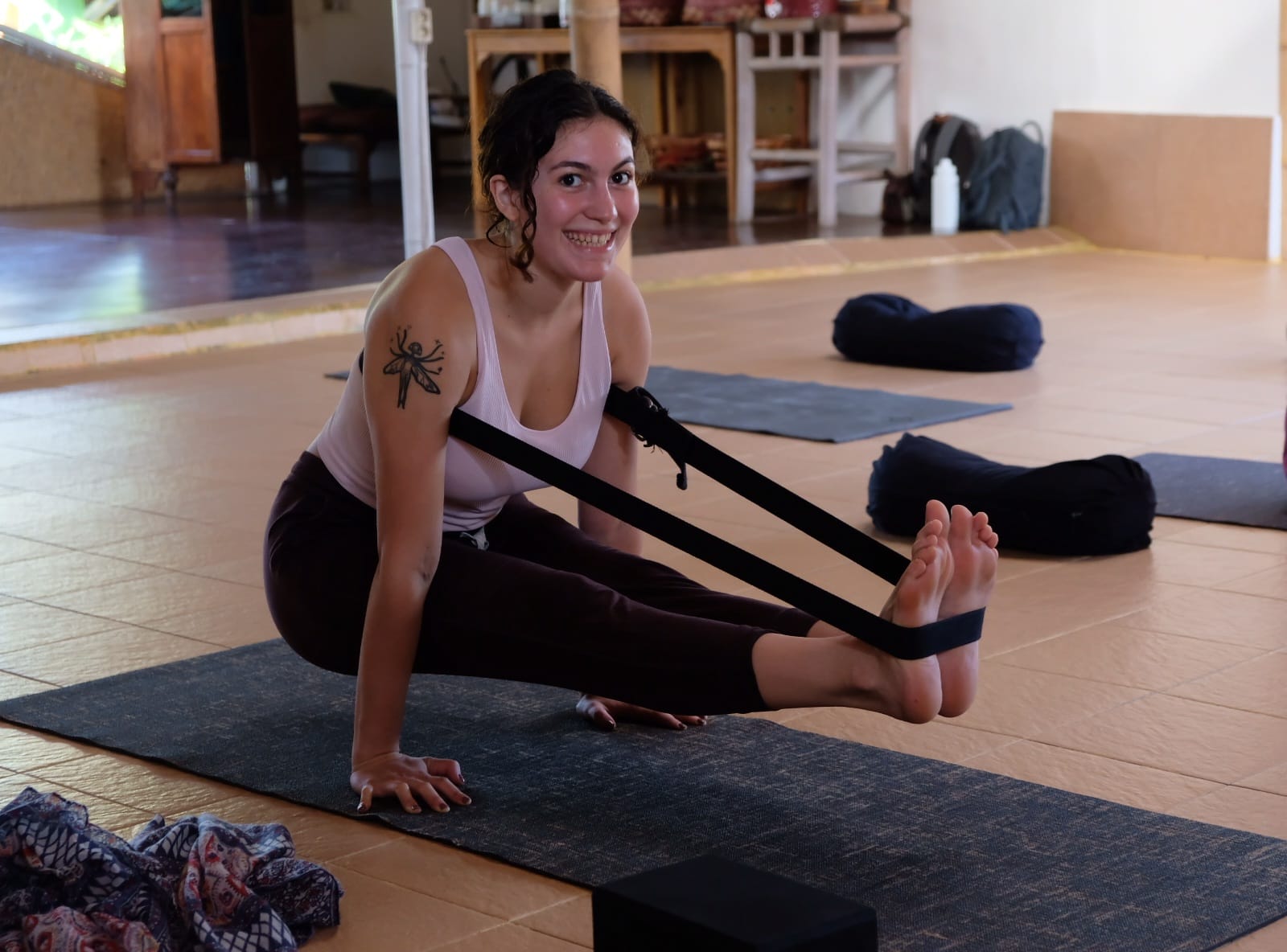
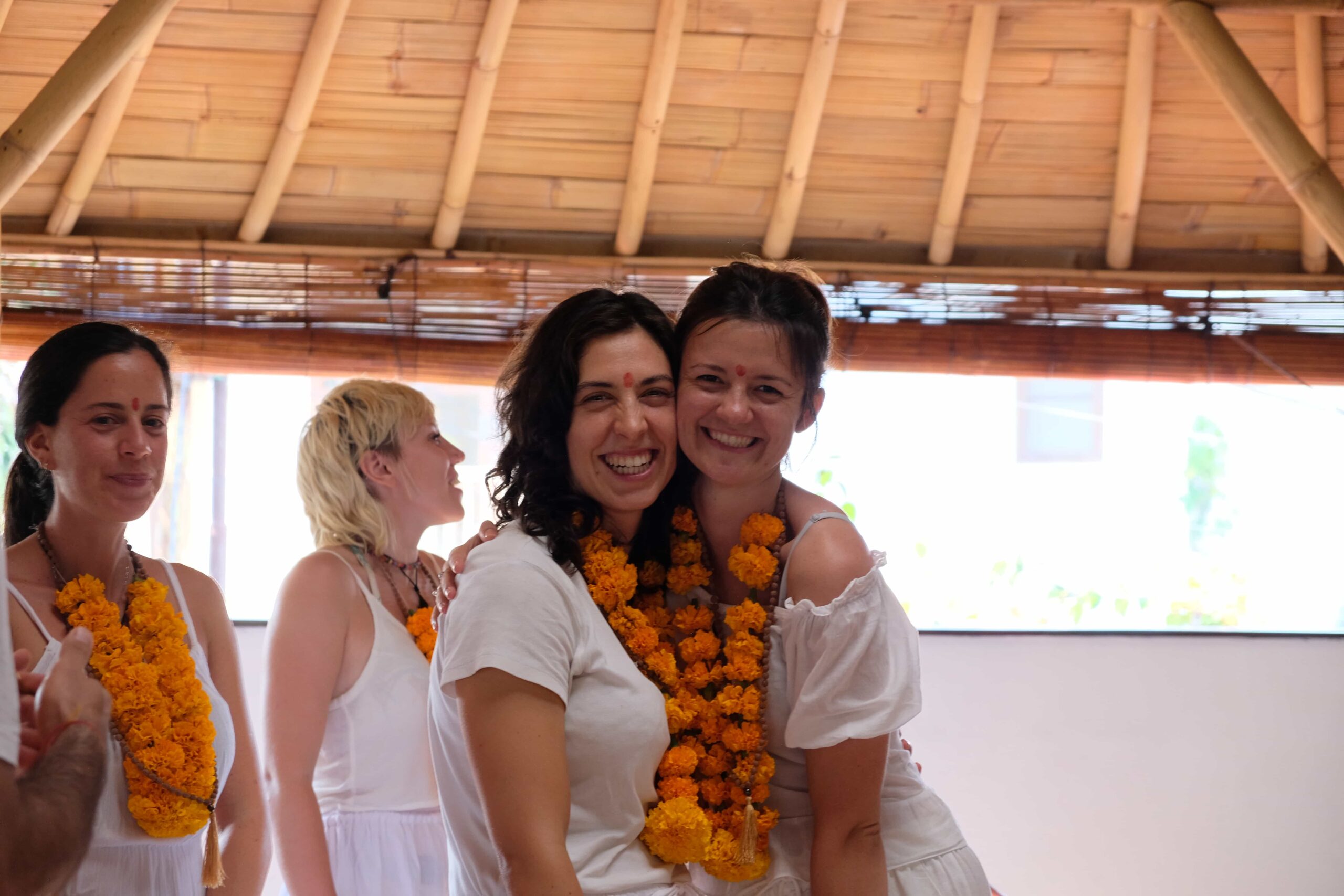

This training will provide you with the tools to balance and activate the energy centers for your own and your student’s well-being.
Dive into these foundational texts of yoga philosophy.
Gain a deeper understanding of the philosophical and spiritual foundations that underpin the practice of Hatha Yoga.
We offer a place where you can find happiness through movement, pranayama, meditation and well-
balanced nutrition. We are here to guide you on your spiritual journey, to connect with your Inner-Self
and to find contentment and peace in life.
This 300-hour Advanced Yoga Teacher Training in Bali offers you the opportunity to explore new dimensions of Yoga and integrate fresh insights into your own teaching practice. By the end of our training, you will have grown significantly on your journey, both as a teacher and a student, ready to bring your enhanced knowledge and experience into your practice and teaching.
Sukshma Vyayama is an ancient practice introduced by Sri Dhirendra Bhramchari. It is a technique of yogic postures and dynamic movements to activate the subtle pranic body and rejuvenate our joints.
Many yoga teachers focus on asana poster practices but don’t practice these small exercises which are crucial in the development of strength and flexibility in our physical body and to develop our consciousness.
You will be learning the complete sequence of 48 yogic exercises to develop the consciousness in each and every cell of your body.
The literal meaning of the word “sutra” is “thread” and these sutras are just combinations of words threaded together. Within the space of these 196 short sutras the entire science of Yoga is clearly presented: its aim, the necessary practices, the obstacles you may encounter along your path, their removal and the results that will be obtained from these practices.
The Samadhi Pada, Sadhana Pada, Vibhuti Pada and Kaivalya Pada – We cover the four chapters of Patanjali’s Yoga Sutras in this course offering you a greater understanding of his teachings and highlight the importance these teachings have today in our daily life.
“The song of god” is a conversation between the warrior Arjuna and his guide Lord Krishna. Arjuna finds himself in a moral dilemma and seeks help from Krishna.
In these classes we will discuss the 18 chapters and their meaning in detail. We give you more information about the three secrets of the Bhagvad Gita and you will realize that this scripture and its teachings are now as relevant as it was when it was written.
We will teach you how to use this knowledge in your everyday life, especially in particularly hard or over exciting times to keep the equanimity of your mind, no matter the external circumstances.
“Yoga succeeds by these six: enthusiasm, openness, courage, knowledge of the truth, determination, and solitude.” – Swami Svatmarama, Hatha Yoga Pradipika
In Western culture, Hatha yoga is typically understood as asanas. In the Indian traditions, Hatha yoga is much more. It extends beyond being a sophisticated physical exercise system and integrates ideas of ethics, diet, cleansing, pranayama, meditation and a system for spiritual development of the yogi.
We are going to discuss the Hatha Yoga scriptures that build the foundation of all the different Yoga styles we practice today, with a main focus on the Hatha Yoga Pradipika and Gheranda Samitha.
The Hatha Yoga Pradipika and the Gheranda Samhita are the most detailed manuals describing the techniques of Hatha Yoga. We are going to explore the 4 limbs of Hatha Yoga decribed by Swami Svatmarama in the Hatha Yoga Pradipika and the Saptanga Yoga in Maharshi Gheranda’s Gheranda Samitha.
Ashtanga Vinyasa, a vital part of the Hatha Yoga system, consists of six fixed series with a set order of asanas. In this 300 hour yoga teacher training Bali we focus on the Primary Series and introduce you to the art of teaching Ashtanga Vinyasa.
Ashtanga Vinyasa Opening and Closing Mantra: Learn the traditional opening and closing mantras that frame the practice and set a mindful intention.
Breakdown of Sanskrit Asana Names: Gain a thorough understanding of the Sanskrit names for each asana, improving your ability to teach and communicate effectively.
The Importance of Ujjayi Breath: Discover the role of Ujjayi breath in maintaining focus, rhythm, and energy during the practice of Ashtanga Vinyasa.
Drishti in the Asanas: Understand the significance of Drishti (gaze) in each asana to improve concentration and alignment.
Mastering Vinyasa Flow: Learn the fluid transitions of Vinyasa flow, including jumping back and front, to maintain the seamless flow of the practice.
Executing Chakrasana (Rollback): Learn the technique of Chakrasana to improve your practice and teaching repertoire.
Transitioning from Hasta Uttanasana to Urdhva Dhanurasana: Practice the transition from Hasta Uttanasana into Urdhva Dhanurasana (drop-back) and standing back up into Hasta Uttanasana, adding depth and complexity to your practice.
We will break down the asanas of the Primary Series and you will learn the alignment and sequence of the poses included
Surya Namaskar A
Surya Namaskar B
Standing postures
Sitting postures
Finishing postures
In the second part of the training, we will break down several arm balancing postures. You will learn:
Preparation and Injury Prevention
Warm-Up and Strengthening Exercises: Learn effective warm-up and strengthening exercises to prepare your body for arm balancing and avoid injuries.
Practicing Arm Balancing Asanas
Techniques for Arm Balancing: Discover the key techniques for practicing arm balancing asanas, ensuring proper form and stability.
Alignment and Instruction
Bone-on-Bone Alignment: Understand the importance of bone-on-bone alignment to achieve balance and minimize strain.
Verbal and Physical Alignment for Students: Learn how to provide both verbal cues and physical adjustments to help your students achieve correct alignment in arm balancing postures.
Building Arm Strength
Developing Necessary Arm Strength: Learn techniques to build the necessary arm strength to support and sustain the arm balancing postures.
The following asanas are included in this 300 hour YTT Bali
The science of life – Ayurveda is India’s ancient health system offers so much wisdom for living a healthy and happy life. It is one of the oldest systems of medicine in the world. We would like to give you a deeper understanding of the foundation of Ayurveda, the Pancha Mahabhutas (five elemnts) and the three doshas as key aspects. Ayurveda is protection of health and prevention of diseases by balancing body, mind, soul and environment. Our main focus will be on the ayurvedic diet and how it is used to prevent and treat different diseases.
We cover the following topics:
Chakras are energy centers in our body. They are junction points where the different nadis meet and represent a connection between our physical and astral body. They are a complex and ancient energy system and were first mentioned in the Vedas. For our wellbeing it is important that the chakras stay open and are aligned. But, the way we live our lives nowadays often results in energy blockages and can lead to physical and mental disturbances and diseases.
Chakra meditation is a powerful source to activate and purify our chakras. When all chakras are open, turning and glowing, there are no blockages in the physical, mental and spiritual areas. We feel energetic, stable and centered. You will get detailed information about the seven chakras. You will learn to use different meditation techniques, chanting of beeja mantras and asanas for each chakra to unfold its potential.
We will have a daily pranayama practice where we dive deeper into different pranayama techniques. You will experience their effects and will understand of how to include them into your Yoga classes. We will introduce you to the concept of kumbhaka – breath retention
You will learn different variations of each pranayama, and get familiar with the pranayama techniques mentioned in the Hatha Yoga scriptures.
Hatha Yoga Pradipika Pranayama:
Gheranda Samitha Pranayama
The chakras are only one aspect of the yogic anatomy system with the objective of equilibrium for body, mind and soul to be aligned. We will discuss
What is the connection between Yoga and the nervous system? How are emotions stored in our body? Why is the position of the spine so important? How to position my hands in arm balances?
To get a deeper understanding of our bodies and how the different yogic practices affect us we will discuss
You will learn shatkarma according to the Hatha Yoga Scriptures
Some of these cleansing techniques we will practice together, including Jal Neti, Sutra Neti, Nauli, Kapalbhati and Trataka.
The Sanskrit word mudra is translated as ‘gesture’. Mudras can be described as psychic, emotional, devotional and aesthetic gestures.
Mudras are a combination of subtle physical movements that alter mood, attitude and perception,. They deepen awareness and concentration. A mudra can involve the whole body in a combination of asana, pranayama, bandha and visualization techniques or it can be a simple hand position.
Mantra – a word or sound repeated to aid concentration in meditation
Chanting mantras is an ancient practice that calms your mind. When you chant mantras your mind releases the positive energy that decreases the negative thought patterns.
You will learn how to sequence Yogic Sukshma Vyayama, Ashtanga Vinyasa and Arm Balancing classes.
The time schedule is not fixed and can change according to location, teacher availability, weather conditions and general situation.
Shatkarma | 06:30 to 06:45 am |
Pranayama/Meditation | 06:45 to 07:45 am |
Yoga asana practice | 07:45 to 09:15 am |
Breakfast | 09:15 to 10:15 am |
Yoga theory/Anatomy & physiology | 10:15 to 11:45 am |
Asana Alignment | 11:45 to 01:30 pm |
Lunch | 01:30 to 03:15 pm |
Yoga philosophy | 03:15 to 04:45 pm |
Teaching practice | 05:00 to 06:30 pm |
Mantra Chanting | 06:30 to 07:00 pm |
Being a Yoga teacher is more than showing poses. It’s about guiding others with compassion on their journey to a better life.

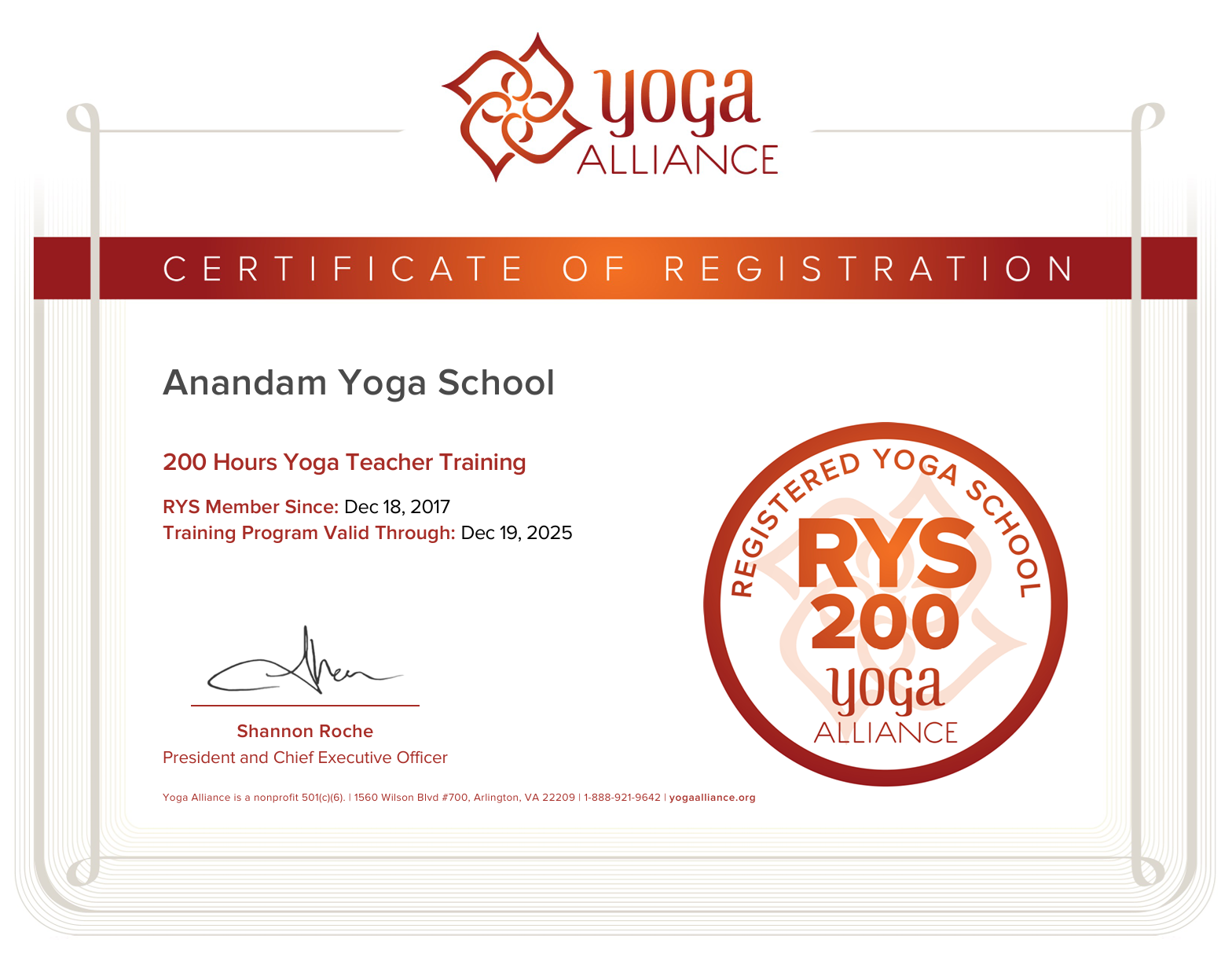
Posted onTrustindex verifies that the original source of the review is Google. I did my 200YTT with Anandam Yoga School in August in Bali and it was an exceptional experience. Navin and Ming guided us through the course and shared their valuable yoga experience and knowledge with us. Katharina’s anatomy classes perfectly linked the facts to the yoga practice. She also provided a detailed and very well- structured course manual which I still keep consulting. I enjoyed the course very much, could improve my own practice, deepen my knowledge and prepare myself for a step forward to become a yoga teacher. I am thinking of doing some other training courses with Anadam Yoga School in the future. Thank you, Anandam Yoga School team:-)Posted onTrustindex verifies that the original source of the review is Google. I completed my 200h YTT in 2025, and it was truly a transformative experience. While the classes sometimes felt overwhelming, everything gradually fell into place, and the journey continues well beyond the training itself. A heartfelt thank you to the teachers who made this possible: ✨ Navin, for teaching from his heart, his ability to break down asanas and provide encouragement when it got tough. ✨ Katharina and Bhavna, for making anatomy classes engaging and accessible. The training was more than getting stronger physically - it was wholesome and encouraged self-discovery and inner growth.Posted onTrustindex verifies that the original source of the review is Google. I had an incredibly beautiful week at Heimbach in Germany while taking part in the Yoga Nidra Teacher Training. Sandeep and Katharina are very good and really nice teachers with a lot of knowledge of and experience with authentic yoga. I am happy that they shared this with me and I feel that this made me grow in my yoga path. This, added to the positive atmosphere they created during the training, made this week an unforgettable experience!Posted onTrustindex verifies that the original source of the review is Google. I had a wonderful week of yoga Nidra teacher training at Heimbach in Germany. Beautiful location located in the green hills of the Eifel. Learning from Sandeep and Katharina was very precious, they have so much knowledge about and experience with what true yoga is. And they create such a nice athmosphere with their beautiful personalities as well! I had an amazing week!Posted onTrustindex verifies that the original source of the review is Google. J’ai suivi en avril 2025 la formation de 200 heures avec Navin, Ming et Katerina et j’en ai eu une expérience très positive. Les cours de yoga de Navin et Ming m’ont aidé à progresser dans les postures. Merci à Katherina pour ses cours d’anatomie compréhensibles pour des élèves dont l’anglais n’est pas la langue maternelle. Je ne peux que recommander cette formation pour toute personne qui souhaite approfondir ses connaissances sur le yoga dans le but ou pas de l’enseigner.Posted onTrustindex verifies that the original source of the review is Google. I had the most wonderful experience with Anandam Yoga School! I enrolled myself for the 200hours yoga teacher training course in April 2025 and it was the most transformative experience I had so far. Navin and Ming gave us alot of guidance in asanas practices and the long history of yoga. Also Katharina provided us with an in-depth knowledge about human anatomy. I will definitely enrol myself with Anandam yoga school in the future to enrich myself!Posted onTrustindex verifies that the original source of the review is Google. J’ai réalisé le 200h YTT avec Anandam à Bali. L’expérience était extraordinaire et très enrichissante. Les profs sont supers. Au-delà de la formation, j’ai beaucoup appris sur moi même, pris confiance en moi et en mes capacités. Je pense faire le 300h YTT également avec cet organisme !Posted onTrustindex verifies that the original source of the review is Google. I had a beautiful experience at Anandam Yoga School. Naveen, Katharina and Sandeep were wonderful teachers. They are so kind and always allow for an atmosphere to feel safe in your vulnerability. The YTT is always an experience where people are learning and growing physically, mentally, emotionally and spiritually. My yoga teachers always allowed for this growth whilst supporting us when we made mistakes or found poses hard, for example. The YTT here was a truly precious experience for me and one I will hold in my heart. I loved the authenticity and the way we could connect to the yoga philosophy and spirituality of yoga - which is what makes yoga yoga. There was an emphasis on teaching traditional yoga which is incredibly important and I appreciated this a lot. Thank you for my wonderful teachers for their kindness and calmness throughout my journey. The YTT created an opportunity for self-discovery that I truly valued. I enjoyed socially learning about yoga with a lovely group of people. I found depth in my connection with the spirituality of yoga in my solitude and had a real opportunity for self-reflection and empowerment with the YTT. I would definitely recommend it to anyone considering YTT. I am still in touch with Naveen, Katharina and Sandeep and am sure our paths will cross via yoga or friendship again at some point in our lives. Lots of love to you, Bhawna 🤍Posted onTrustindex verifies that the original source of the review is Google. I recently completed the 200-hour Yoga Teacher Training with Anandam, and it was one of the most beautiful gifts I’ve ever received in my life. My intention going into the course was to expand my understanding of the yogic philosophy, anatomy, and deepen my personal asanas practice— I walked away with everything I hoped for, and more than I could have imagined. The environment Sandeep and Katharina created allowed us to really dive deep —physically, mentally, and spiritually. If I had to sum up the experience in one word, it would be authentic. Every aspect of the training, from the teachings to the community, was rooted in true yogic history & values. The teachings themselves were structured, disciplined and methodical, yet delivered in a way that felt accessible and not intimidating. I’m the kind of person who loves to ask a million questions, and all of the teachers so happy to engage (even when I thought i might be being annoying!) Amidst all the learning, there was also so so much playfulness, fun, and laughter. It made the experience feel lighthearted, joyful, and full of connection. Beyond the course completion, the supporting materials we received have been invaluable -they're tools I continue to reference almost daily. Meeting and learning from Sandeep and Katharina, (& Nadeem & Ming) was transformative, and I’m beyond grateful to have had the opportunity to learn and grow in such a supportive environment from such beautiful, knowledgeable & grounded people. <3Posted onTrustindex verifies that the original source of the review is Google. Dear Katharina, dear Sandeep, dear Navin, dear Ming - you wonderful teachers! A heartfelt thank you for all the new knowledge, your experiences you shared with us and the loving space you have created to meet all these wonderful people in our small group of the 200hour teacher training! I loved the atmosphere, I loved the place, I loved the togetherness and of course I loved the pool to cool down 😅 in hot Bali!
We genuinely value direct bookings with us as they help us provide you with the best possible experience.
You can make a deposit of $500 to book a spot. If something goes wrong, changing
your dates is free and easy
Big private double room with AC
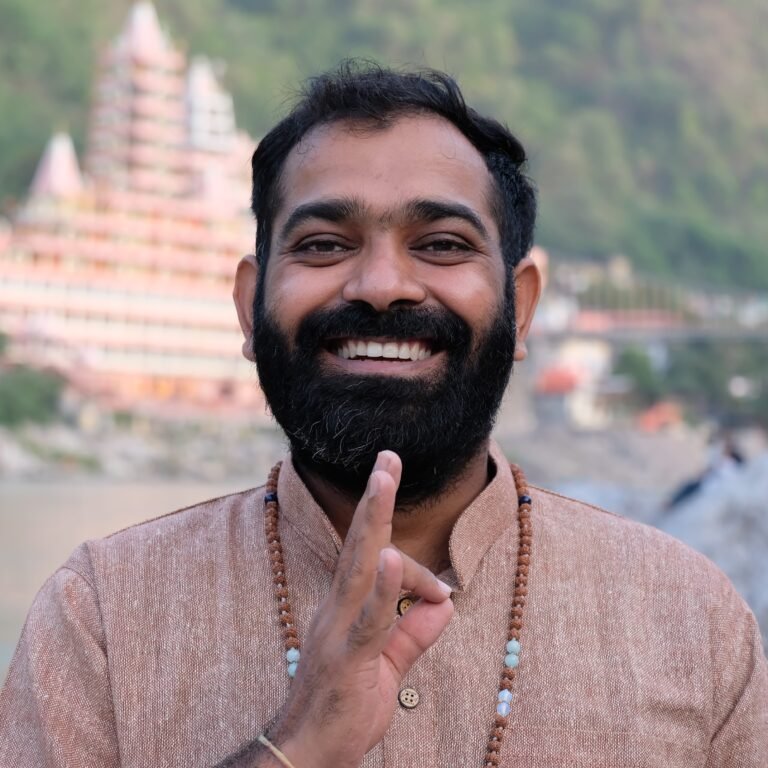
Lead Teacher
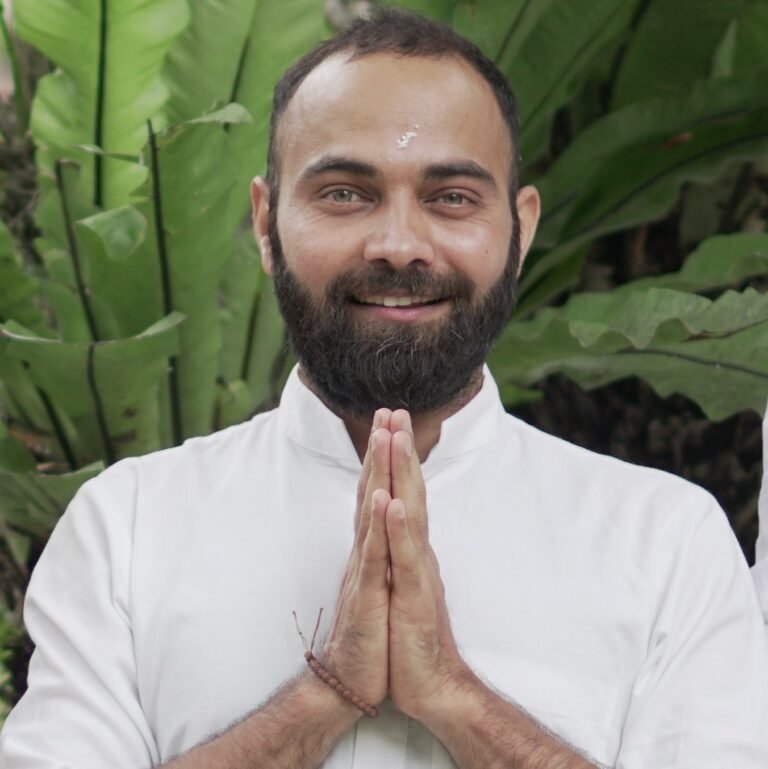
Lead Teacher
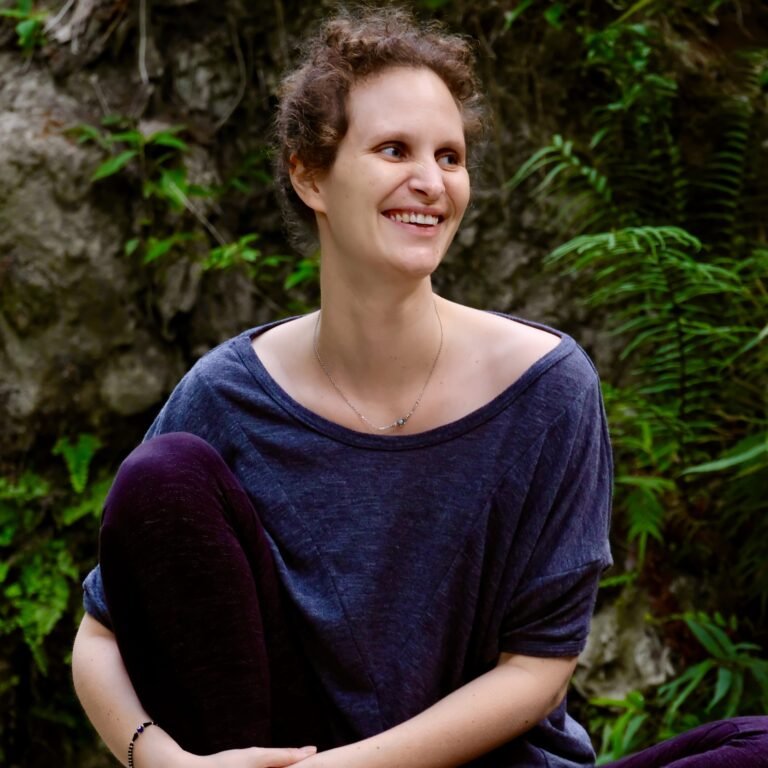
Lead Teacher
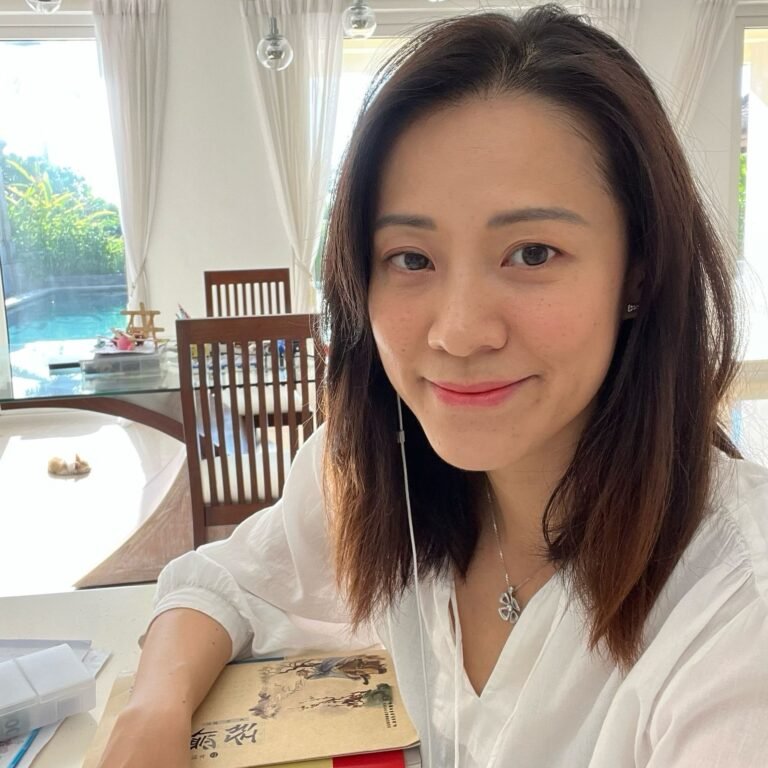
Lead Teacher
Being a Yoga teacher is more than showing poses. It’s about guiding others with compassion on their journey to a better life.

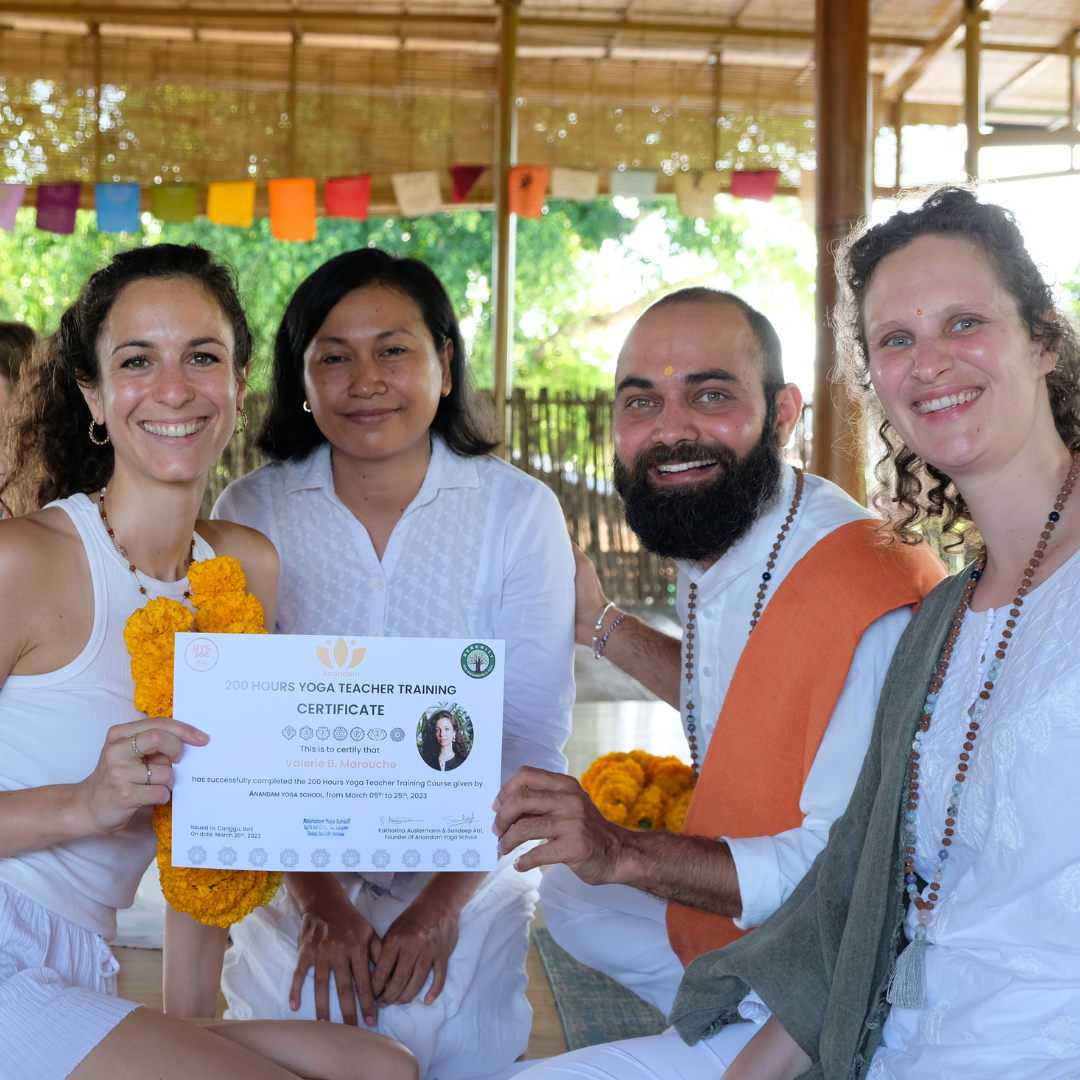



Our average class size is 5 to 10 students. We believe in individualized support thus the smaller group size. It allows us to support every student on their personal Yoga journey.
The youngest student we had in our 300 hour Yoga teacher training was 23 and the oldest student we had so far was 56. So, we have quite a wide age range, which beautifully allows Yoginis and Yogis of different ages to learn from each other.
Yes, a completed 200 hour Yoga Teacher Training with a Yoga Alliance registered Yoga School (RYS) is mandatory to join this 300 hours Yoga Teacher Training.
We offer different course packages. You can choose to stay with us or find you own accommodation. The basic course fee (without accommodation) includes all study materials, Yoga Alliance certification after successful completion and daily breakfast. You can choose from different course and accommodation packages if you choose to stay with us.
In our 300 hour Yoga teacher training Bali we focus on the practice of Ashtanga Vinyasa and Arm Balancing. You will learn
Yes, we are big fans of Yoga props. They are a great way to support your practice and the practice of your future students.
The nearest airport is I Gusti Ngurah Rai International Airport in Denpasar. From there you can book a grab or gojek to reach the course venue (250 k – 300 k IDR). You can download the apps and they are a great to get around in Bali for reasonable prices. You can get a sim card at the airport.
Please bring comfortable, ideally light cotton clothes for the practice; white clothes for the opening and closing ceremonies; natural mosquito repellent; beach towels; your everyday toiletries; light and airy clothing; sunscreen and all you think you need for a wonderful time in the tropical Bali.
Practice Yoga regularly, drink enough water, try to cultivate a positive and open mindset, try to get enough rest and take time for relaxation, try to include arm, shoulder and core strengthening exercises into your routine, try to learn the Ashtanga Vinyasa Primary series chart (order and names of the postures).
To reserve your spot in the course we kindly ask you to deposit $500. This deposit is non-refundable. In case you have to cancel the training for any reason, the deposit can be applied to a later training.
Yes, this 300 hour Yoga teacher training is registered with Yoga Alliance and you will receive a Yoga Alliance affiliated certificate after successful completion. With this certification you can register with Yoga Alliance as a RYT-500 (Registered Yoga teacher – 500 hours) and you can teach Yoga internationally.
Yes, sure! We don’t have any dietary restrictions during our Yoga teacher training. However, we recommend to adhere to a vegetarian diet during the Yoga teacher training Bali, to feel the effects on body and mind.
Before joining Anandam Yoga School’s 300 hours Yoga Teacher Training, you have to fulfill these eligibility criteria.
We are offering a special price for the first 6 registrations
per month!
